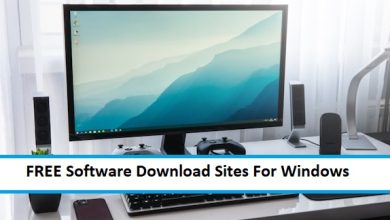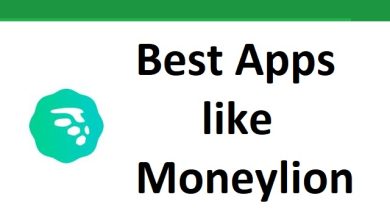Top Features All Good Quality Resource Management Tools Should Have

Some of the best resource management tools on the market today include Asana, Monday.com, Smartsheet, and Trello, and Jira that has several tools available such as resource planning tool ActivityTimeline and others. Each of these solutions offers powerful automation capabilities along with project tracking & reporting features as well as collaborative workflows that make it easy to stay connected even when working remotely or in distributed teams across geographically dispersed locations. The platforms also provide robust security protocols so users can rest assured knowing their data is safe from unauthorized third parties attempting to access information without permission granted by an organization’s administrator(s).
Unlocking the Benefits of Resource Management Tools: What to Look For
Managing resources is an essential part of delivering any project successfully. From tracking time and money spent, to managing assets and personnel, resource management tools help businesses streamline processes while obtaining better results. But with so many options out there, how do you know which one will be the most effective for your business? Here we take a look at some of the top features all good quality resource management tools should have. By understanding what to look for in a tool, you will be able to identify and invest in solutions that can save you both time and money. Read on to discover everything you need to know about finding the right resource manager for your business.
Who needs resource management tools?
Businesses, non-profit organizations use resource management tools, and other entities to manage their resources more efficiently. These tools help with tasks such as Scheduling, Task Tracking & Reporting, Project Management & Collaboration workflow while also providing security measures for data protection.
The benefits of using resource management tools
Resource management tools can help with tasks such as scheduling, task tracking & reporting, project management & collaboration workflows while also providing security measures for data protection.
The benefits of using resource management tools include:
- Streamlined Resource Utilization – Automated processes built into the software allow users to quickly analyze utilization rates across teams or departments in order to visualize where resources are being used most effectively and identify areas needing improvement before costly mistakes occur due to over/underutilized personnel or equipment allocations over time.
- Increased Visibility – Comprehensive dashboards provide access to real-time information about current progress made on each project at any given moment; this allows managers greater control over operations so they can further optimize performance against set goals or adjust plans accordingly when changes arise during the course of day-to-day business functions instead of relying solely upon their own manual calculations which could lead them astray if not regularly updated manually throughout an initiative’s timeline period(s).
- Improved Collaboration– Modern systems offer integrated messaging platforms along with file-sharing capabilities that enable stakeholders to spread out geographically yet still be able to stay connected regardless through virtual means whenever needed without having face meeting personally every time important decisions have been reached within a given workflow process—saving everyone both money and valuable time spent traveling back forth between locations just go physically sign documents off on paper (or digitally) before moving forward towards completion.
What features a good quality resource management tools should have?
Resource management tools have become increasingly important for businesses of all sizes, as they help to ensure that resources are used efficiently and effectively. As these tools become more popular, it is essential to consider what features you should look for when selecting a tool.
Here we discuss the top features all good quality resource management tools should have:
- Automation – Automatic processes make life much easier by taking care of mundane tasks quickly and reliably, freeing up time that can be spent on other work-related activities such as planning projects or analyzing data. A good resource management tool will offer automated scheduling, task tracking, and reporting capabilities in order to streamline core business functions.
- Schedule Optimization – Good scheduling optimization helps maximize staff productivity while minimizing costs associated with underutilized resources like employee overtime pay or equipment downtime charges due to poor utilization rates. Quality resource management software enables users to easily optimize schedules based on availability constraints so that optimal workloads are assigned across teams and resources with minimal user input required.
- Project Tracking & Reporting– Robust project tracking provides visibility into project performance in real-time; this allows managers greater control over their organization’s workflow, helping them identify cost overruns before they happen or adjust operations accordingly when unexpected changes occur during a given timeline period. Comprehensive reporting gives stakeholders insight into current progress made against goals set at the start of each new initiative along with detailed analytics about areas needing improvement going forward so actionable insights can be gleaned from collected data sets if needed later down the line.
- Collaborative Workflows – Resource management software should enable users to easily collaborate with each other on projects and tasks, regardless of their location. This allows teams to quickly share resources and ideas when working together in order to develop more efficient workflows. Collaboration tools such as file sharing, messaging systems, or even video conferencing capabilities are becoming increasingly popular features found within resource management solutions today, allowing stakeholders greater control over how they interact with one another during the course of day-to-day operations.
- Security – Good data security is essential for any business that handles sensitive customer information or large amounts of proprietary data; thus it goes without saying that the best resource management systems must have advanced encryption protocols built into them along with user access controls so those who need permission can securely access critical files while keeping out unauthorized third parties from penetrating an organization’s digital infrastructure. By taking these features into consideration before selecting a tool for your company, you can ensure its long-term success through optimal resource utilization support provided by a quality system designed specifically suited for meeting its needs.
Conclusion
Resource management tools are essential components of any organization’s operations and have become increasingly popular due to their ability to maximize resource utilization, provide greater visibility into projects & tasks, as well as enable collaborative workflows. When selecting a tool for your company it is important to consider what features you should look for in order to ensure its long-term success; this article outlined the top five features that all good quality resource management tools should have including automation, schedule optimization, project tracking & reporting capabilities, collaboration tools such as file sharing or messaging systems along with robust security protocols. By taking these factors into consideration when making your decision you can be confident that you will select an effective solution tailored specifically to meet your organizational needs.




